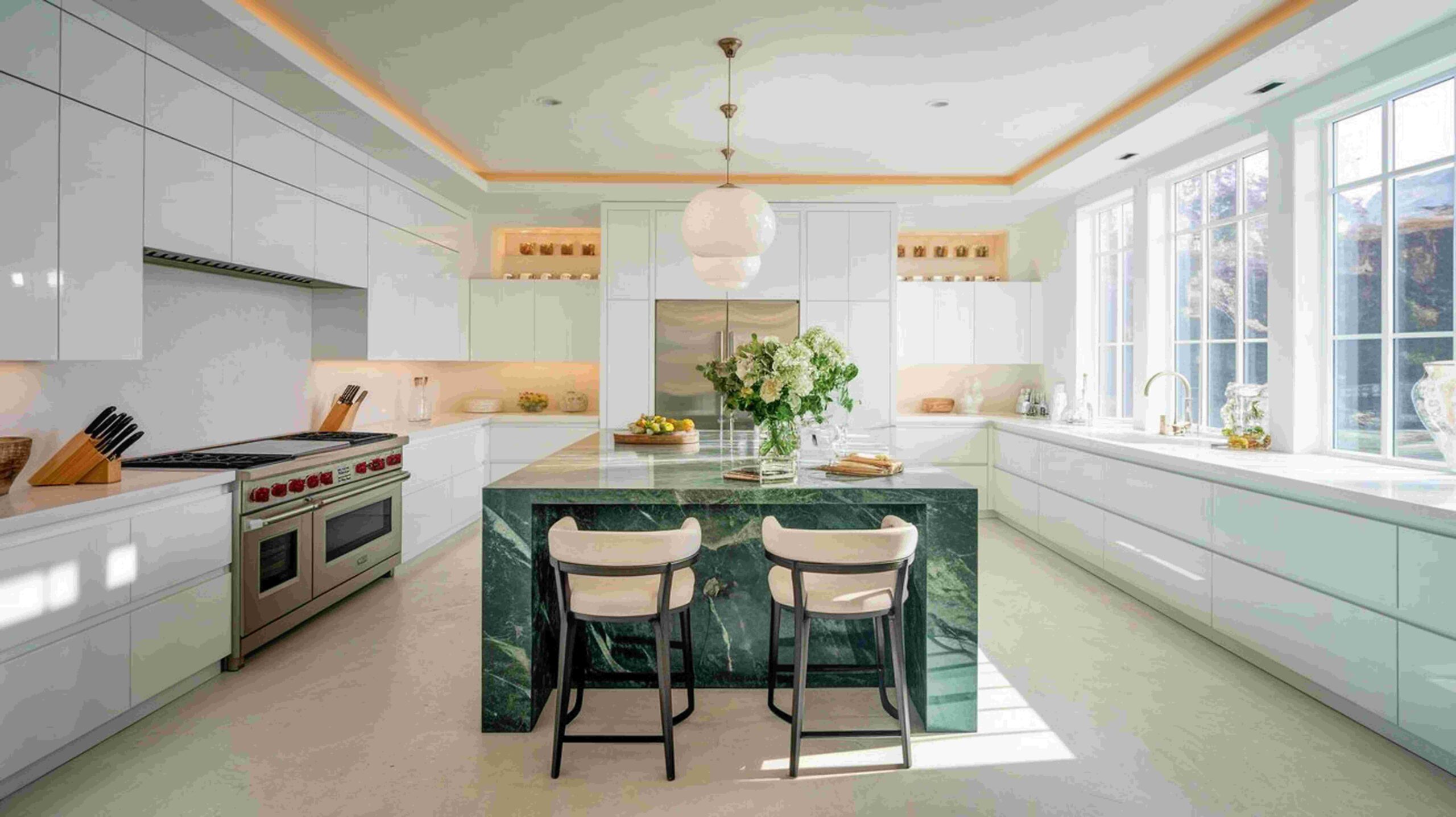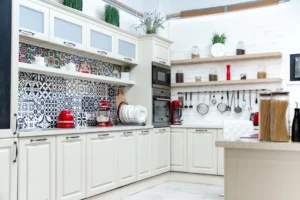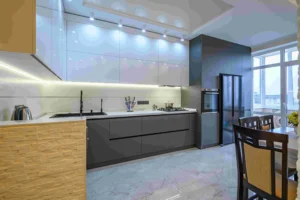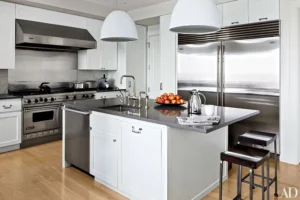Have you been wondering how to refinish kitchen cabinets without spending a fortune?
You’re not alone. Many homeowners want a fresh kitchen look without paying for a full remodel.
The good news: refinishing cabinets is one of the easiest and most affordable DIY projects that can completely transform your space. With the right prep, tools, and techniques, even beginners can achieve a sleek, professional finish.
In this guide, you’ll find step-by-step instructions, expert tips, budget-friendly tricks, and advice on what mistakes to avoid.
Table of Contents
1. Why Refinish Instead of Replace Cabinets?
Replacing cabinets can be costly and create a lot of waste. Refinishing is a smart, affordable way to update your kitchen’s look.
You keep your existing cabinets, save money, and still get a beautiful result. It’s also a greener choice for budget-friendly makeovers.
2. Tools and Supplies You’ll Need
Before you begin, make sure you have all the supplies you’ll need:
Sandpaper, a sander, degreaser, wood filler, primer, paint or stain, a protective topcoat, safety gear, and something to help with ventilation.
Don’t forget to use masks, gloves, and keep the area well-ventilated, especially with oil-based products.
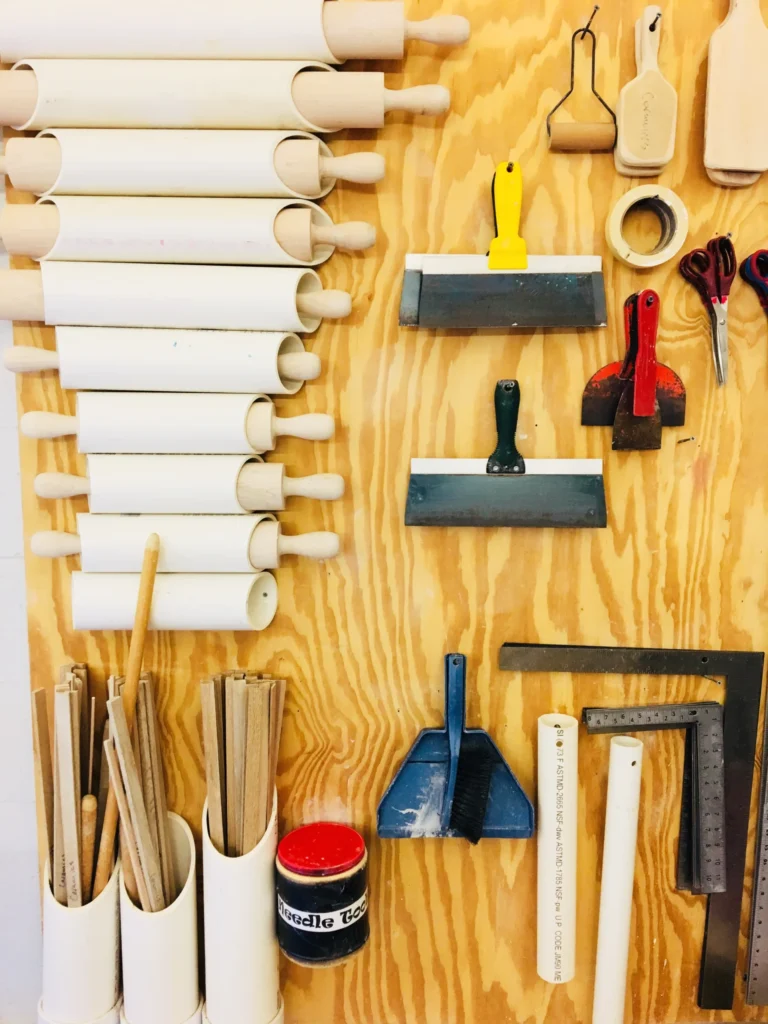
3. How to Refinish Kitchen Cabinets: Step-by-Step Guide
The process involves removing cabinet doors, labeling hardware, cleaning, sanding, priming, painting or staining, and finishing with a clear coat.
Whether you’re using waterborne alkyd primer, oil-based primer, or eco-friendly low VOC paints, following each step carefully prevents peeling and guarantees long-lasting durability.
4. Prepping and Cleaning Your Cabinets
Getting ready is key to a great result. Take off all the hardware, clean the surfaces with a degreaser, and fix any dents with wood filler.
Clean cabinets help primer stick better. If you have laminate or veneer, gently sand and use a bonding primer to avoid chipping or peeling.
5. Sanding and Repairing for a Smooth Finish
Sanding is what makes the finish look smooth. Start with medium-grit sandpaper to remove old varnish, then switch to fine-grit for a smooth surface.
Sand between coats for the best results. Taking your time with sanding helps paint or stain go on evenly and makes cabinets look new.
6. Choosing Paint vs Stain for Cabinets
Paint creates a modern look, like classic white or navy, while stain shows off the wood’s natural beauty.
For busy kitchens, tough waterborne alkyd paints work well. If you want a safer, greener option, choose eco-friendly stains or low VOC finishes to avoid strong smells.
7. Applying Primer and Topcoat Like a Pro
A good primer stops stains from showing through and helps paint stick. Apply thin, even coats and let each one dry fully.
Add a protective topcoat, like polyurethane or clear acrylic, to keep cabinets safe from moisture and daily wear. This helps prevent chips and scratches.
8. Budget-Friendly DIY Cabinet Makeover Tips
You can update your kitchen without spending a lot. Try spray-painting old hardware, look for used tools, or use two colors to give cabinets a modern touch. Refinishing cabinets yourself can save you up to 70% compared to buying new ones.
9. Common Mistakes to Avoid
Be sure to clean well, sand carefully, and use thin layers of paint. Let each coat dry completely, especially primer and topcoat, to avoid sticky surfaces.
Always wear safety gear and keep the area well-ventilated to stay safe from fumes. Taking your time really makes a difference.
10. Final Styling, Care, and Maintenance
After refinishing, you can upgrade your kitchen with new hardware, soft-close hinges, or trim. Use gentle cleaners and skip harsh chemicals to keep cabinets looking good.
Wipe up spills right away and add a new clear coat every few years. Good care keeps your cabinets looking great for longer.
FAQ’s
Q1. How much does it cost to refinish kitchen cabinets yourself?
DIY cabinet refinishing typically costs between $150–$400, depending on paint, stain, and supplies. It’s far cheaper than replacing cabinets, which can cost thousands.
Q2. What is the easiest way to refinish kitchen cabinets?
The easiest way is to clean, lightly sand, apply primer, and finish with durable paint or stain. Using a paint sprayer can also speed up the process.
Q3. Do I need to sand cabinets before refinishing?
Yes. Sanding helps remove the old finish and creates a smooth surface for primer or stain. Skipping sanding often causes peeling or uneven results.
Q4. Can I refinish laminate kitchen cabinets?
Yes, but laminate needs a bonding primer and light sanding for proper adhesion. With the right prep, laminate cabinets can be successfully refinished.
Q5. How long does refinishing kitchen cabinets take?
On average, a DIY refinishing project takes 3–5 days. This allows time for cleaning, sanding, priming, painting, or staining, and drying between coats.
